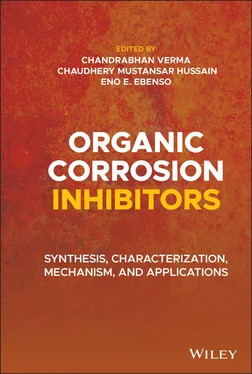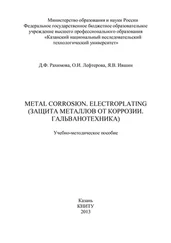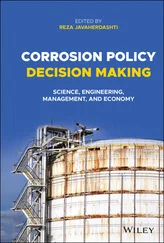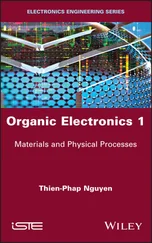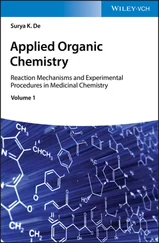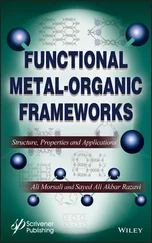In the case of iron plans, for investigating the adsorption of pyrrole, furan, and thiophene on iron surfaces, Guo et al. [71] found that among the three iron plans, Fe(110), Fe(100), and Fe(111), the Fe(110) has a high packed density and it is the most stable plans compared with others. Other parameters derived from MD and MC simulations are reviewed in the following sections.
3.3.3.1 Interaction and Binding Energies
The interaction energy is defined as the required energy for one mole of an inhibitor molecule to be adsorbed on a metal surface [72]. For a simulated system in a vacuum, it can be determined using the following equation [73, 74]:
(3.17) 
In the presence of a solvent:
(3.18) 
where E Total, E Surface, E Surface + solution, and E inhdenote the total energy of the simulated system, surface without solution, surface with solution, and inhibitor molecule alone, respectively.
The binding energy is defined as the negative values of the interaction energy. A large binding energy implies that the inhibitor molecule can be strongly adsorbed over a metal surface [75, 76]:
(3.19) 
A representative case where interaction and binding energies are used to discuss the adsorption behavior of corrosion inhibitors have been performed by Lgaz et al. [77]. Authors constructed a simulation cell containing one of the inhibitor’s molecule (hydrazone derivatives), water molecules (491 H 2O), and corrosive particles (i.e. 9 Cl −and 9 H 3O +) in contact with the Fe(110) surface. Simulations of neutral and protonated molecules have been performed in the presence of solvent using Materials Studio software while the canonical ensemble (NVT), COMPASS force field, and simulation time of 2000ps have been chosen in Forcite module for simulations. In this work, authors found that all inhibitor molecules adopted a flat orientation over iron surface with negative sign of interaction energy, suggesting that all investigated molecules can strongly adsorb on the iron surface. Interaction and binding energies were found in line with experimentally inhibition efficiency.
In the case of the MC method, some energies such as total energy, adsorption energy, deformation energy, and rigid adsorption energy are obtained as output of the simulation [78–81].
3.3.3.2 Radial Distribution Function
Besides interaction and binding energies, trajectories from MD simulations can be structurally analyzed using a distribution function called the radial distribution function (RDF), which is often written as g(r) . In brief, it can be defined as the probability distribution of an atom in a spherical volume with a radius of r in a random system of the same density. The RDF is determined based on the equation proposed by Hansen and McDonald [42].
(3.20) 
where 〈 ρ B〉 localrepresents the particle density of B average over all shells beside particle A.
The interaction between an inhibitor molecule and metal surface can be judged based on the location of the first peak, which is located at a nearest neighbor distance. It has been shown that a peak located around 1 Å ~ 3.5 Å indicates a small bond length and thus a potential covalent bond, whereas a peak above 3.5 Å is mainly associated with a physical interaction [77].
3.3.3.3 Mean Square Displacement, Diffusion Coefficient, and Fractional Free Volume
The mean square displacement (MSD) has been used by many researchers in different research field as a route to investigate the dynamical aspects of systems. In corrosion inhibition studies, it has been used to calculate the diffusion coefficient of corrosive particles inside a simulated inhibition film [76]. Generally speaking, potent inhibitors are those that could hinder the diffusion of corrosive species, thus preventing the metal from corrosion. Based on this concept, a corrosive particle with a diffusion coefficient higher or like its diffusion in water can easily penetrate the inhibitor film, whereas limiting its diffusion can limit its movement and therefore protecting the metal against corrosion. The following equation is the general formula of the diffusion coefficient [27]:
(3.21) 
The R i( t ) denotes the position vector of i ‐th particle at time t . N represents the total number of diffusion particles. The term | R i( t ) − R i(0)| 2is the ensemble average of the MSD. In MD simulations, the diffusion coefficient is determined by performing a linear fit of the MSD plot using the following equation:
(3.22) 
where m is the slope of MSD plot.
In the same context, the free volume inside an inhibitor film can also be determined from MD simulations. It has been confirmed that the diffusion of particles inside an inhibitor film that has large cavities can be very high, while that with lower cavities can hinder their diffusion [74, 76].
The application of atomistic simulations in corrosion inhibition studies is reviewed in Chapter 4of this book.
This research was supported by basic science research program through the National Research Foundation (NRF) of Korea funded by the Ministry of Science, ICT and Future Planning (No. 2015R1A5A1037548).
1 Lewars, E. (2016). Computational chemistry. In: Introduction to the Theory and Applications of Molecular and Quantum Mechanics, 3ee, 318. Springer.
2 Cramer, C.J. (2013). Essentials of Computational Chemistry: theories and Models. John Wiley & Sons.
3 Satoh, A. (2010). Introduction to Practice of Molecular Simulation: Molecular Dynamics, Monte Carlo, Brownian dynamics, Lattice Boltzmann and Dissipative Particle Dynamics. Elsevier.
4 Rapaport, D.C. (2004). The Art of Molecular Dynamics Simulation. Cambridge University Press.
5 Marx, D. and Hutter, J. (2009). Ab initio Molecular Dynamics: Basic Theory and Advanced Methods. Cambridge University Press.
1 1 Leimkuhler, B. and Matthews, C. (2016). Molecular Dynamics. Springer.
2 2 Hollingsworth, S.A. and Dror, R.O. (2018). Molecular dynamics simulation for all. Neuron 99: 1129–1143.
3 3 Pareek, S., Jain, D., Hussain, S. et al. (2019). A new insight into corrosion inhibition mechanism of copper in aerated 3.5 wt.% NaCl solution by eco‐friendly Imidazopyrimidine Dye: experimental and theoretical approach. Chemical Engineering Journal 358: 725–742.
4 4 Zhang, X.Y., Kang, Q.X., and Wang, Y. (2018). Theoretical study of N‐thiazolyl‐2‐cyanoacetamide derivatives as corrosion inhibitor for aluminum in alkaline environments. Computational and Theoretical Chemistry 1131: 25–32.
Читать дальше
